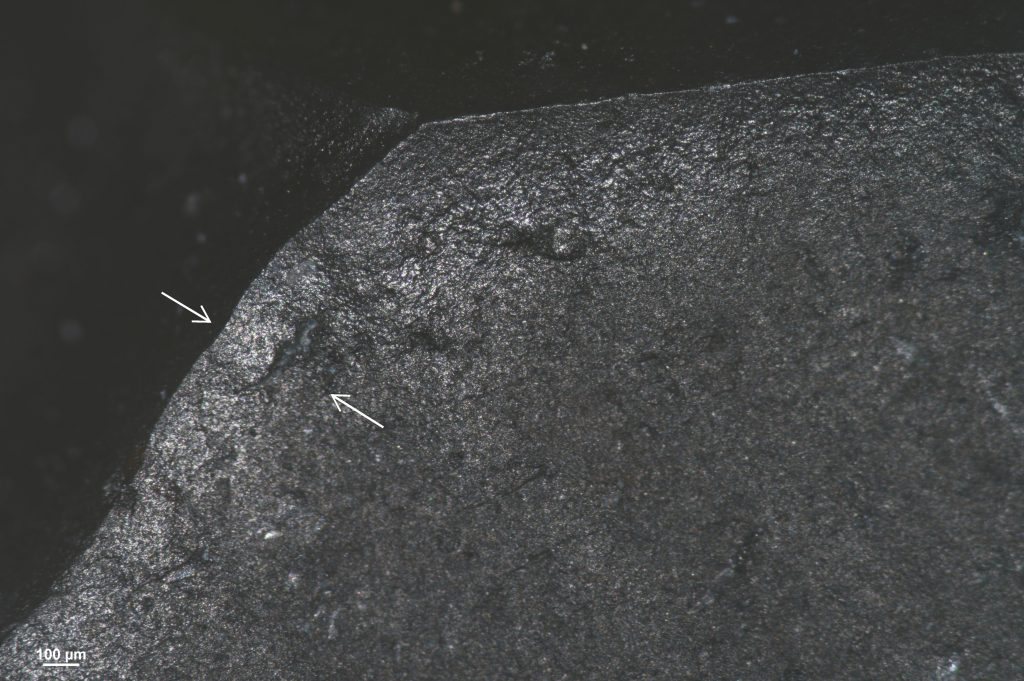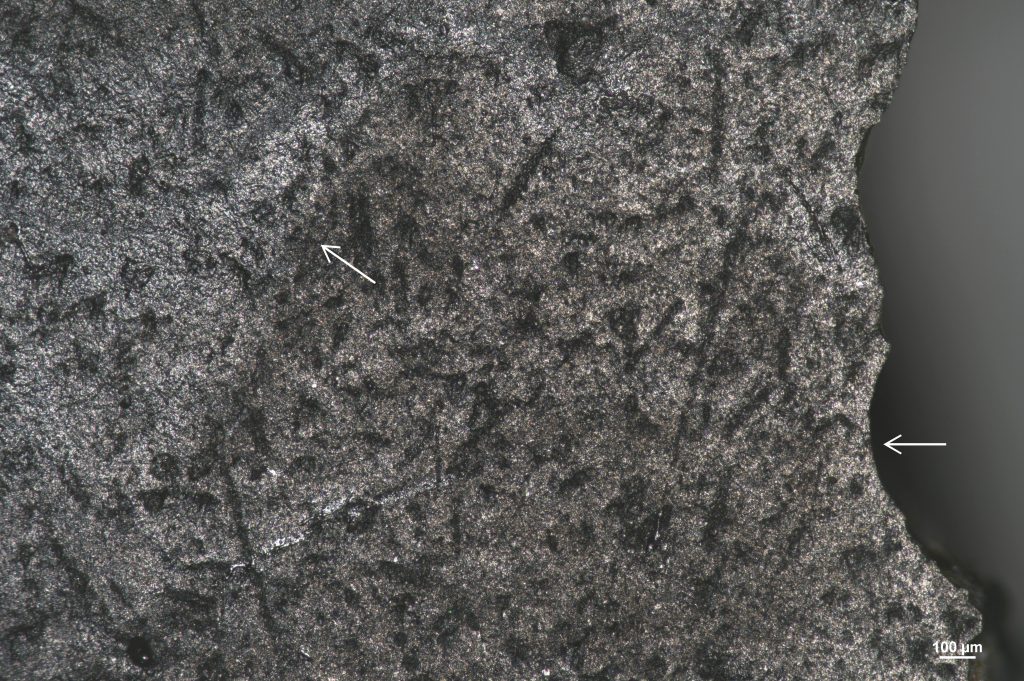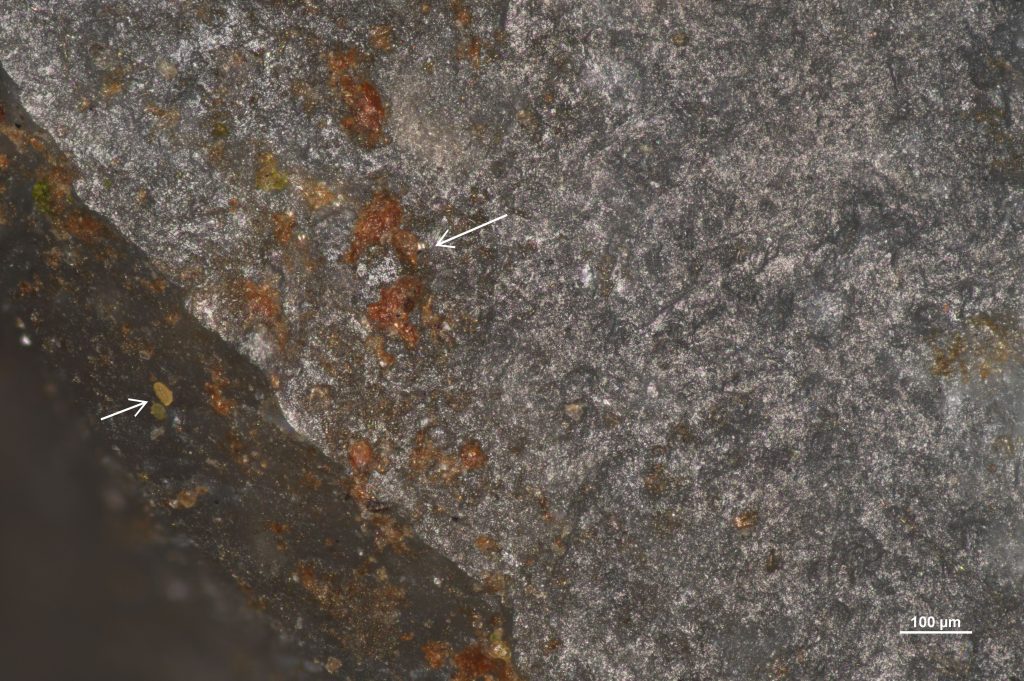After more than four months since the beginning of the experiment, the flint replicas of the “Venus” figurines were once again examined under the microscope. This time, we focused on the observation and documentation of changes to the surfaces of the objects that have developed during this period. These are the first in a planned series of regular use-wear analyses (to be conducted every four months).
During the experiment, the figurines were exposed to contact with various materials: animal hide, willow bast, and plaited nettle fibre cord. They were also subjected to different types of activity: being carried in a pocket during walking, abrasion, as well as being suspended both outdoors and indoors. An additional factor affecting the “Venus” figurines suspended outside were variable weather conditions, such as wind and rain.
Each object was used slightly differently, which is reflected in the diversity of observed traces and their intensity. On the surfaces of two figurines carried in purpose-made pouches sewn from deerskin, we observed surface smoothing and so-called “sickle gloss”. This is a light, glossy layer, partially penetrating the surface, which forms during dynamic contact with some material – in this case, animal hide.

Particularly pronounced polishes developed on the figurine which, in addition to being carried in a pocket, was also abraded deliberately once a week. Equally intensive modifications were observed on the figurine suspended outdoors on a leather thong. In this case, in addition to the polish, considerable abrasion was visible—i.e. substantial wear of the flint surface.

Noteworthy traces were recorded on the surface of the figurine hung outdoors on a nettle-fibre cord. At the points of contact with the material, the surface displayed both polish and significant smoothing. Deep, elongated striations and depressions also appeared. The figurines suspended from willow bast exhibited completely different modifications from those described previously. The organic material left behind an orange deposit which settled in the form of small patches.

All artefacts suspended indoors bear similar, although significantly less intense, use-wear traces compared to those hung outside. This is presumably the result of the absence of wind, which sets objects in motion outdoors.
After the documentation of use-wear traces was completed, the flint “Venus” figurines resumed their “work”. They will again be suspended or placed in pockets for a further four months. We expect additional surface modifications to develop, and we will, of course, continue to report on these on the website.
